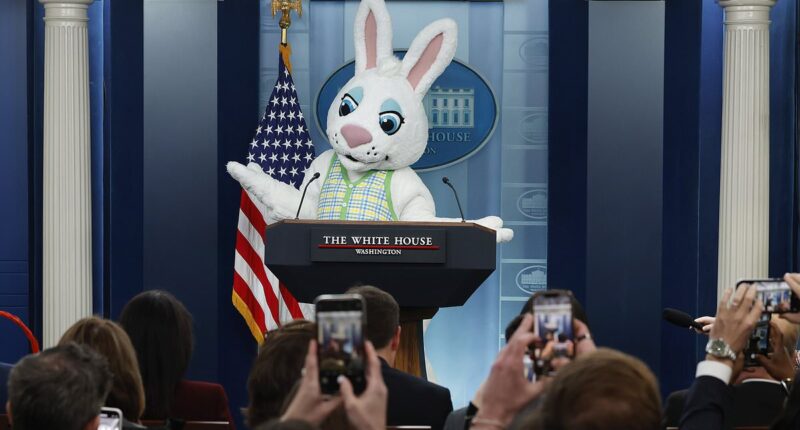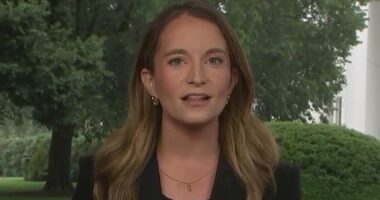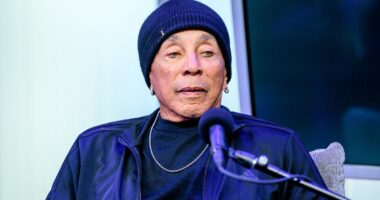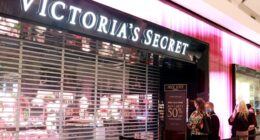Due to Donald Trump’s imposed tariffs on all imported goods and the surging price of cocoa beans, this year’s Easter might turn out to be the priciest ever for chocolate enthusiasts.
Annually, people in the United States spend substantial amounts on sugary delights during the four major candy seasons, namely Valentine’s Day, Easter, Halloween, and the winter holidays. Easter alone accounted for an impressive $5.4 billion in candy purchases last year, as reported by the National Confectioners Association.
However, this Easter looks quite different, thanks to the soaring cocoa prices.
The implementation of Trump’s contentious global tariff scheme could potentially make traditional Easter treats such as chocolate bunnies and bars hidden in eggs more financially burdensome for Americans.
‘If you know you’re going to grill this weekend and chicken prices are high, maybe you’re more likely to make hamburgers or pork chops rather than chicken breasts,’ Joseph Balagtas, professor of agricultural economics, told The Guardian.
‘But chocolate-chip cookies without chocolate chips are a little tough.’
Over the last year, the price of chocolate candy specifically has surged, largely due to a poor climate and bean disease in West Africa, which is home to 70 percent of global cocoa production.
Experts estimate the cocoa shortage to be more than 400,000 tons, leading to rising cocoa prices across the globe, The Guardian reported.

With Donald Trump’s controversial tariffs on all imports and the skyrocketing cost of cocoa, traditional treats like chocolate bunnies and bars tucked into hidden eggs may be harder for Americans to afford this Easter

Every year, Americans spend billions on sweet treats during the ‘big four’ candy seasons – Valentine’s Day, Easter, Halloween and the winter holidays – with Easter alone bringing in a whopping $5.4 billion in candy sales last year

Over the last year, the price of chocolate candy specifically has surged, largely due to a poor climate and bean disease in West Africa , which is home to 70 percent of global cocoa production
For decades, cocoa cost around $2,000 per ton, but in 2024, that number peaked at over $12,000 – leading to massive companies, including Hershey, having to raise their prices while also struggling to keep up with consumer demand.
Earlier this month, Trump unveiled a new round of tariffs starting at a baseline of 10 percent, upending industries including beauty products, supermarket goods and even sex toys.
With his aggressive tariff policies now in effect, chocolate prices are expected to climb even higher than they are now, The Guardian reported.
Though economists aren’t positive how the new tariffs will play out in the end, the Yale Budget Lab estimated that they could cost the average American household nearly $4,000 a year, with prices rising three percent across all goods – including chocolate products.
When Trump announced the latest round of reciprocal tariffs in early April, he had a clear message for companies across the US: ‘If you want your tariff rate to be zero, then you build your product right here in America’.
However, that is simply not possible for the chocolate business.
The cocoa plant, essential for making chocolate candy, only grows in tropical climates, and the US just has two – Hawaii and Puerto Rico. Therefore, nearly all the cocoa used to make American chocolate is internationally imported.
‘The United States produces, I’m going to generously say, 100 tons of cocoa a year,’ Greg D’Alesandre, co-owner and chocolate ‘sourcerer’ for Dandelion Chocolate in California, told The Guardian.

Earlier this month, Trump unveiled a new round of tariffs starting at a baseline of 10 percent, upending industries including beauty products, supermarket goods and even sex toys

Economists estimate that the tariffs could cost the average American household nearly $4,000 a year, with prices rising three percent across all goods – including chocolate products

Chocolate makers, both big and small, are now feeling the pressure of the tariffs, as they are not only paying more for cocoa, but are also dealing with rising costs of packaging and shipping
‘We use about 120 tons of cocoa a year, and Dandelion is considered a very, very small chocolate maker,’ he added.
‘There’s no chance that the US can make all the cocoa that we actually need.’
Chocolate makers, both big and small, are now feeling the pressure of the tariffs, as they are not only paying more for cocoa, but are also dealing with rising costs of packaging and shipping.
‘I’m more concerned about packaging prices,’ Oliver Holecek, owner of Primo Chocolate in New York, told The Guardian.
‘Most paper manufacturing happens in China, and there’s just really not a lot of great resources in the US yet.’
Trump’s tariffs could also drive up shipping costs, particularly if American ports become clogged as they attempt to collectively navigate this ‘new normal’.
Now, for smaller chocolate businesses with far fewer resources than major manufacturers, the future of success is becoming increasingly uncertain and unpredictable.
‘I’ve known three chocolate makers that have gone out of business over the last three years because there’s too much turmoil in pricing,’ D’Alesandre told The Guardian.
‘It’s very difficult to make a plan for it… we’re doing our best to make plans, but a lot of it is wait and see.’

The cocoa plant, essential for making chocolate candy, only grows in tropical climates, and the US just has two – Hawaii and Puerto Rico. Therefore, nearly all the cocoa used to make American chocolate is internationally imported

Some of the items that are expected to become more expensive in the near future thanks to the global tariffs include: Ray Bans, Botox, sex toys, Nespresso, Oura Rings, hospital beds and Birkenstocks
Trump has appeared unmoved by the chaos he enacted on global markets, explaining that he viewed the nation as a patient needing emergency surgery.
‘It was an operation. Like when a patient gets operated on and it’s a big thing. I said this would exactly be the way it is,’ the president told reporters on the South Lawn of the White House earlier this month.
















